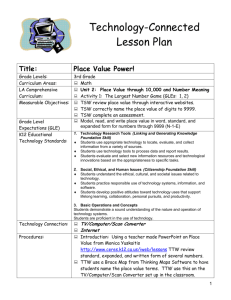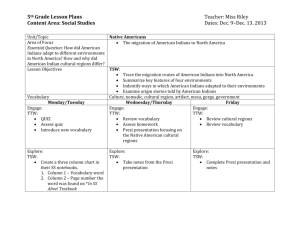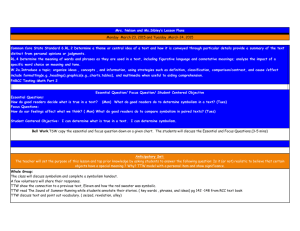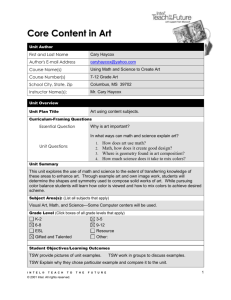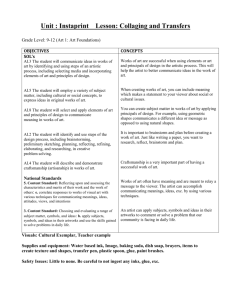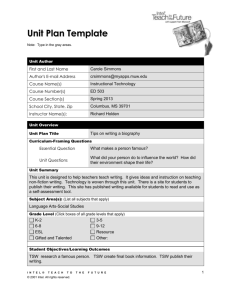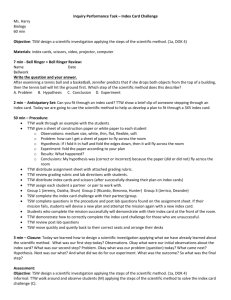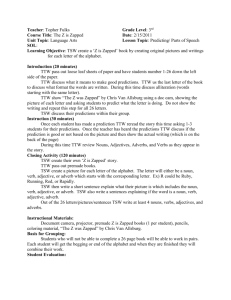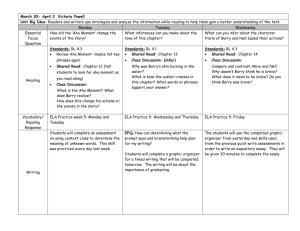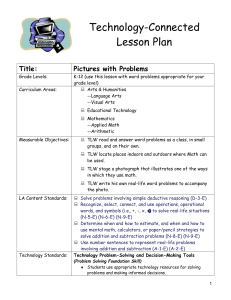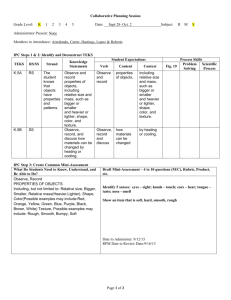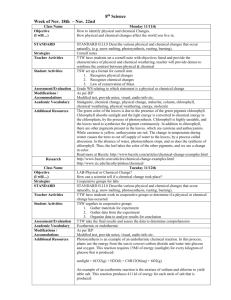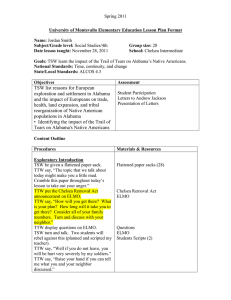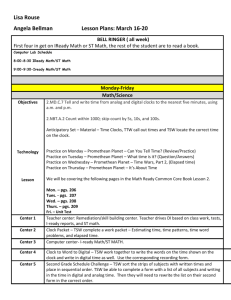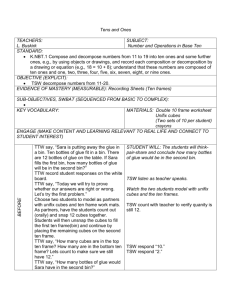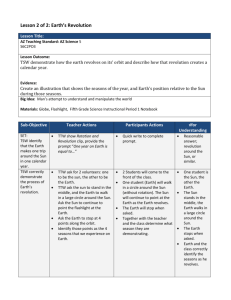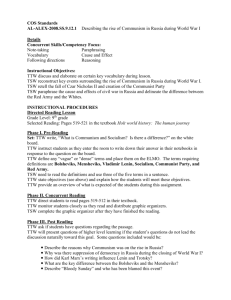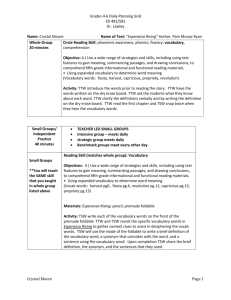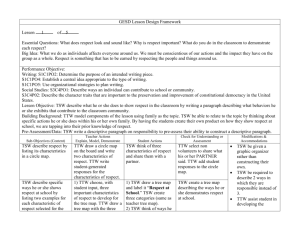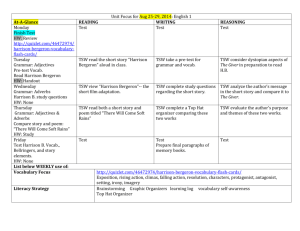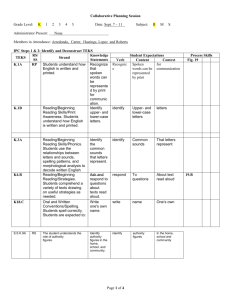Teacher Reflection: What worked/what didn`t work?
advertisement
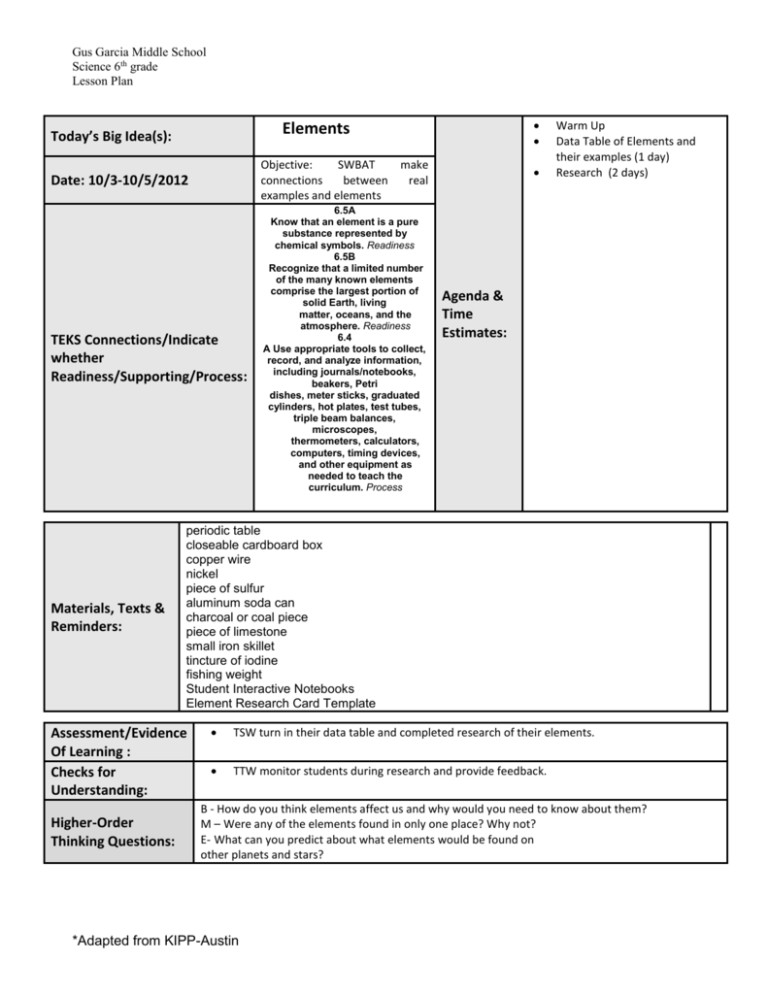
Gus Garcia Middle School Science 6th grade Lesson Plan Objective: SWBAT make connections between real examples and elements Date: 10/3-10/5/2012 TEKS Connections/Indicate whether Readiness/Supporting/Process: Materials, Texts & Reminders: 6.5A Know that an element is a pure substance represented by chemical symbols. Readiness 6.5B Recognize that a limited number of the many known elements comprise the largest portion of solid Earth, living matter, oceans, and the atmosphere. Readiness 6.4 A Use appropriate tools to collect, record, and analyze information, including journals/notebooks, beakers, Petri dishes, meter sticks, graduated cylinders, hot plates, test tubes, triple beam balances, microscopes, thermometers, calculators, computers, timing devices, and other equipment as needed to teach the curriculum. Process Warm Up Data Table of Elements and their examples (1 day) Research (2 days) Agenda & Time Estimates: periodic table closeable cardboard box copper wire nickel piece of sulfur aluminum soda can charcoal or coal piece piece of limestone small iron skillet tincture of iodine fishing weight Student Interactive Notebooks Element Research Card Template Assessment/Evidence Of Learning : Checks for Understanding: Higher-Order Thinking Questions: Elements Today’s Big Idea(s): TSW turn in their data table and completed research of their elements. TTW monitor students during research and provide feedback. B - How do you think elements affect us and why would you need to know about them? M – Were any of the elements found in only one place? Why not? E- What can you predict about what elements would be found on other planets and stars? *Adapted from KIPP-Austin Gus Garcia Middle School Science 6th grade Lesson Plan What the TEACHER is saying/doing… Motivation/Hook: What the STUDENTS are saying/doing… Motivation/Hook: TTW open a card board box with items that represent Elements without telling the students what connections to make. Intro to New Material: “In Unit 3, we will be identifying elements that comprise the Earth, living things, oceans, and atmosphere. How do you think elements affect us and why would you need to know about them? Guided Practice: Intro to New Material: TSW access prior knowledge of matter (solids, liquids, gases ) and their knowledge of metals, nonmetals and metalloids. Guided Practice: Lesson Include Time Estimates: TSW observe teacher as she pulls out items from the box and start predicting how this will relate to our next unit. TTW instruct students to make a data table to organize the elements and examples given and find their place on the periodic table. H: hydrogen He: helium N: nitrogen O: oxygen C: carbon Cl: chlorine Na: sodium Ca: calcium TSW organize the elements and give examples in their notebooks. They will also write their atomic number. Independent Practice: Independent Practice: TTW explain to students that they will be researching information on elements. They will be given a template to use. Instruct students to copy each of the following chemical symbols on the front of their index cards. Each student will conduct their own research. (One element per card): H, He, N, O, C, Cl, Si, Ca, Na, P, and S. TSW have access to student computers, media center, or reference materials for element research. They will place element cards in their notebooks. . Were any of the elements found in only one place? Why not? Closing: Closing: TTW lead a class discussion about the elements of research. What can you predict about what elements would be found on other planets and stars? Additional research to complete element cards. Homework: *Adapted from KIPP-Austin TSW discuss how elements are found everywhere on Earth. Gus Garcia Middle School Science 6th grade Lesson Plan Modifications/ Accommodations/ Differentiated Instruction: SPECIAL EDUCATION: 1. Preferential seating 2. Extended time on Assignment 3. Cooperative grouping 4. Emphasize on major points 5. Daily agenda on board/Teacher review 6. Reduce/minimize distractions 7. Frequent feedback 8. Use positive reinforcement 9. Mnemonic/Instructional Aides 10. Study Aides/manipulatives 11. Short instructions DYSLEXIA: 12. Emphasis: Visual, Auditory, and Tactile skills 13. Provide course syllabus/outline ESL/LEP/ELL: 14. Give directions in small distinct forms 15. Use written backup or oral directions 16. Establish routines in classroom 17. Simplify instructional language, NOT content 18. Pre-teach vocabulary, modeling, hands-on, pictures and visual aids GT: 16. Opportunity to accelerate in areas of strength; independent research 17. Multiple disciplines are integrated into the unit 973538 – 2, 9, 10 973429 – 2 970144 – 2, 9, 10, 11 979943 – 1, 2, 3, 4, 6, 7, 8 967235 – 2, 9 975353 – 2, 9 Teacher Reflection: What worked/what didn’t work? Why? *Adapted from KIPP-Austin
